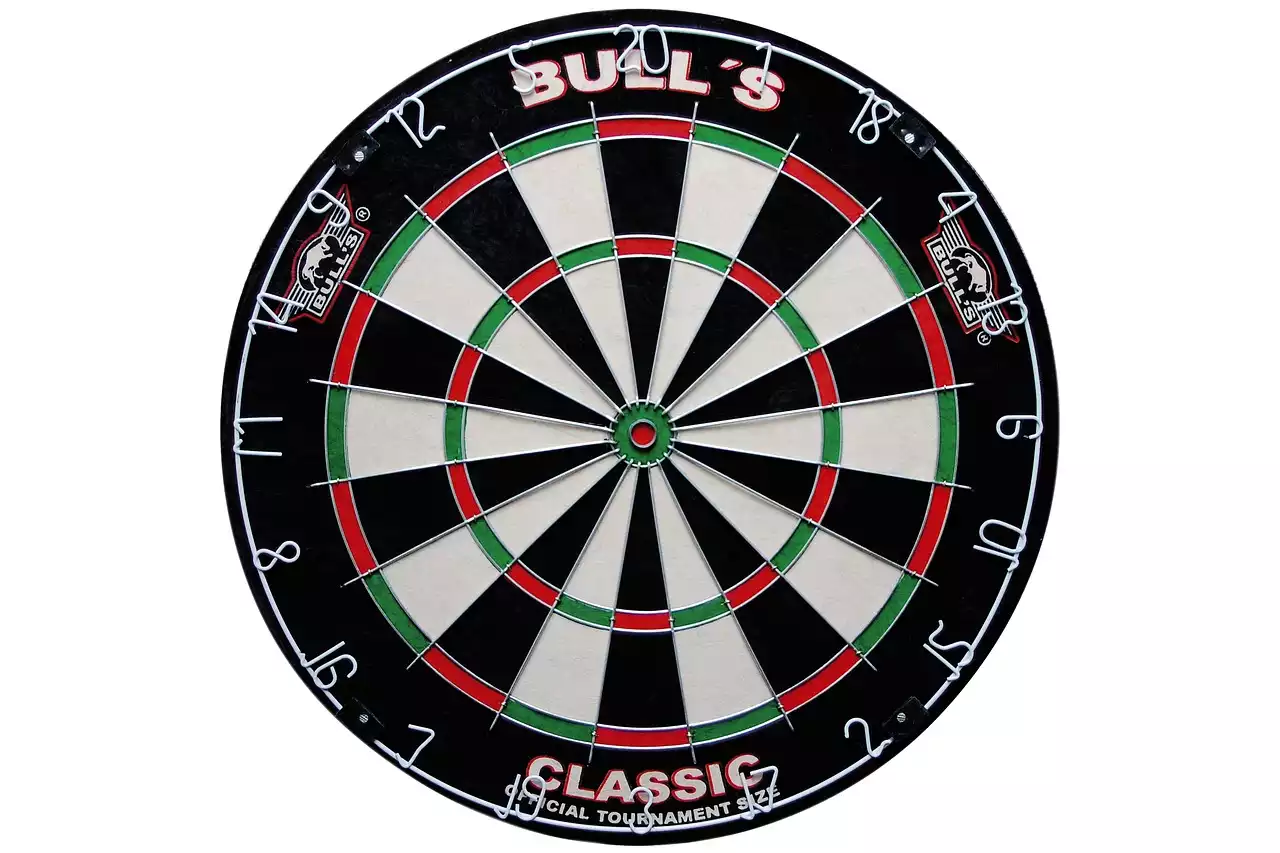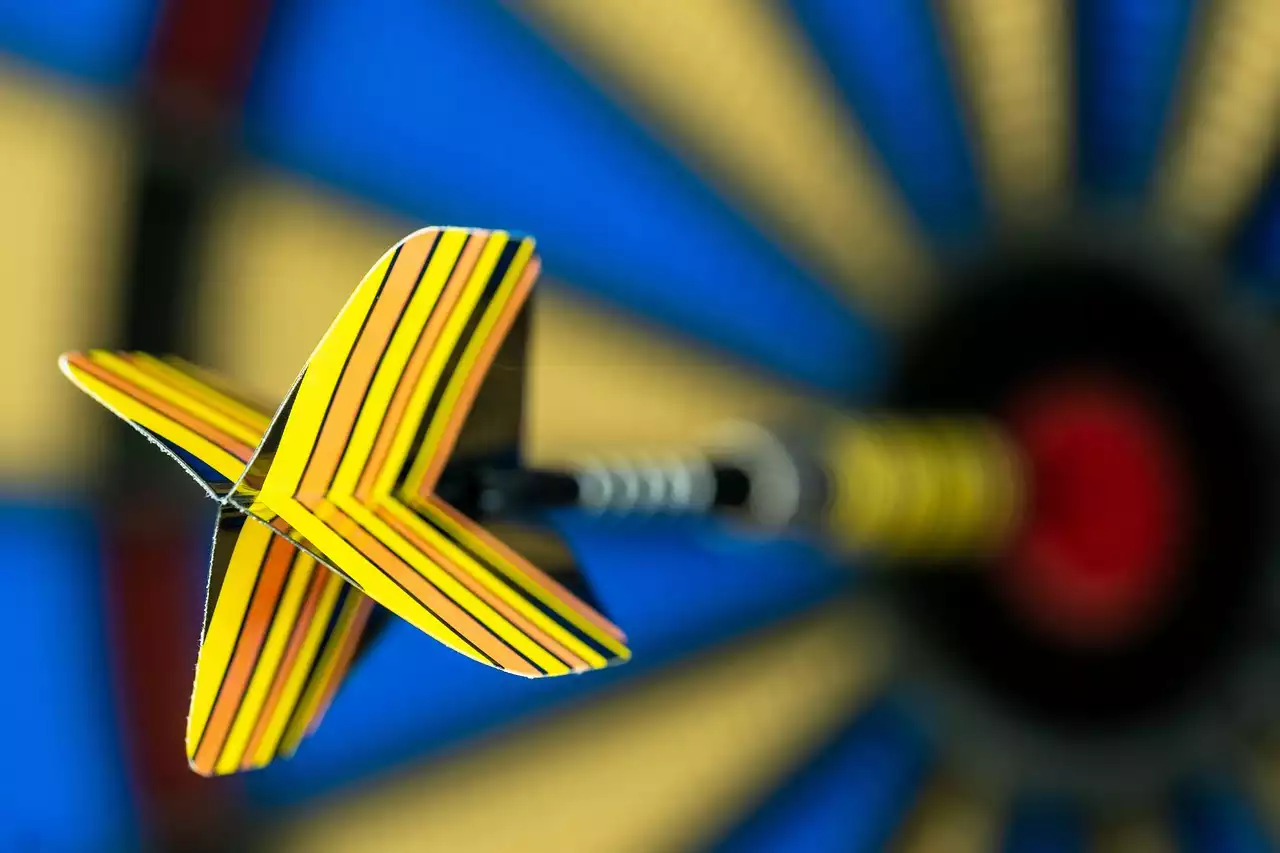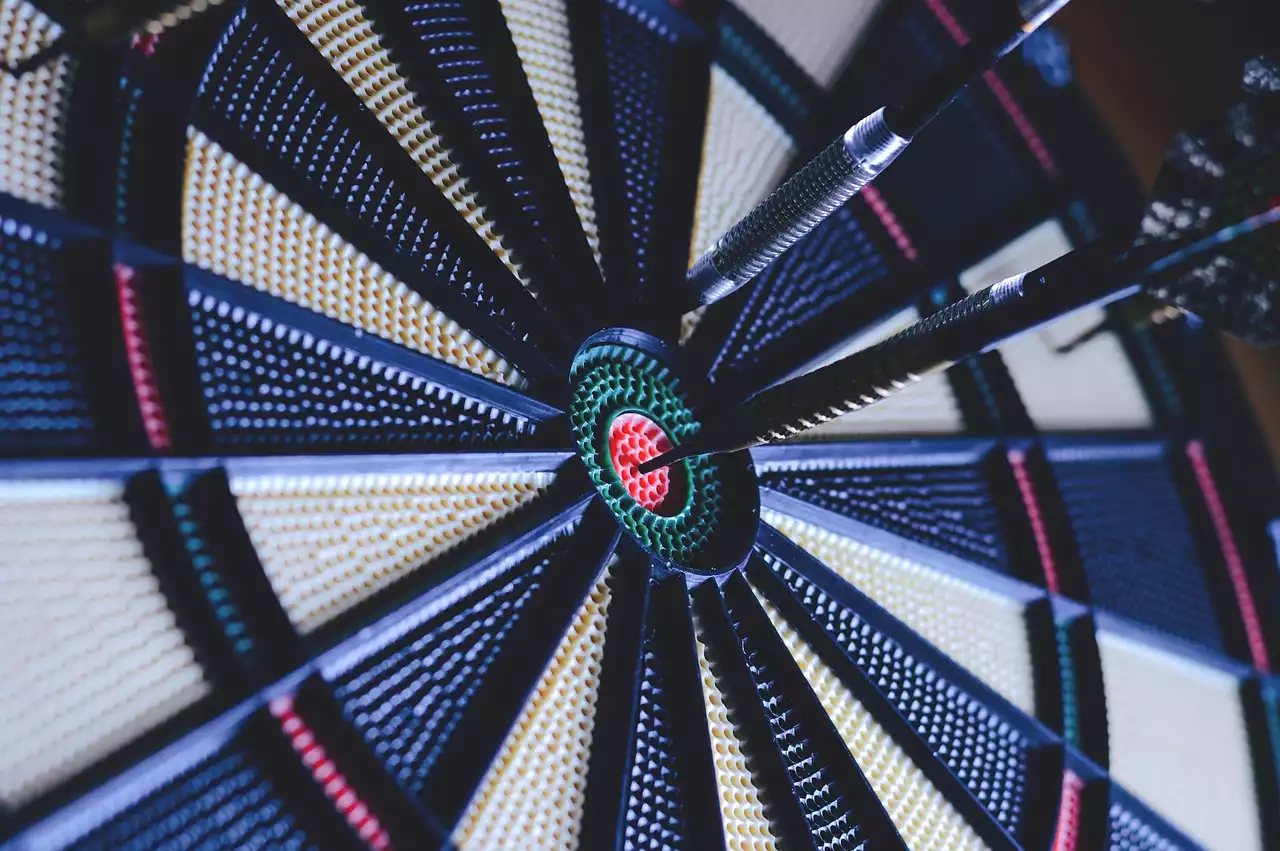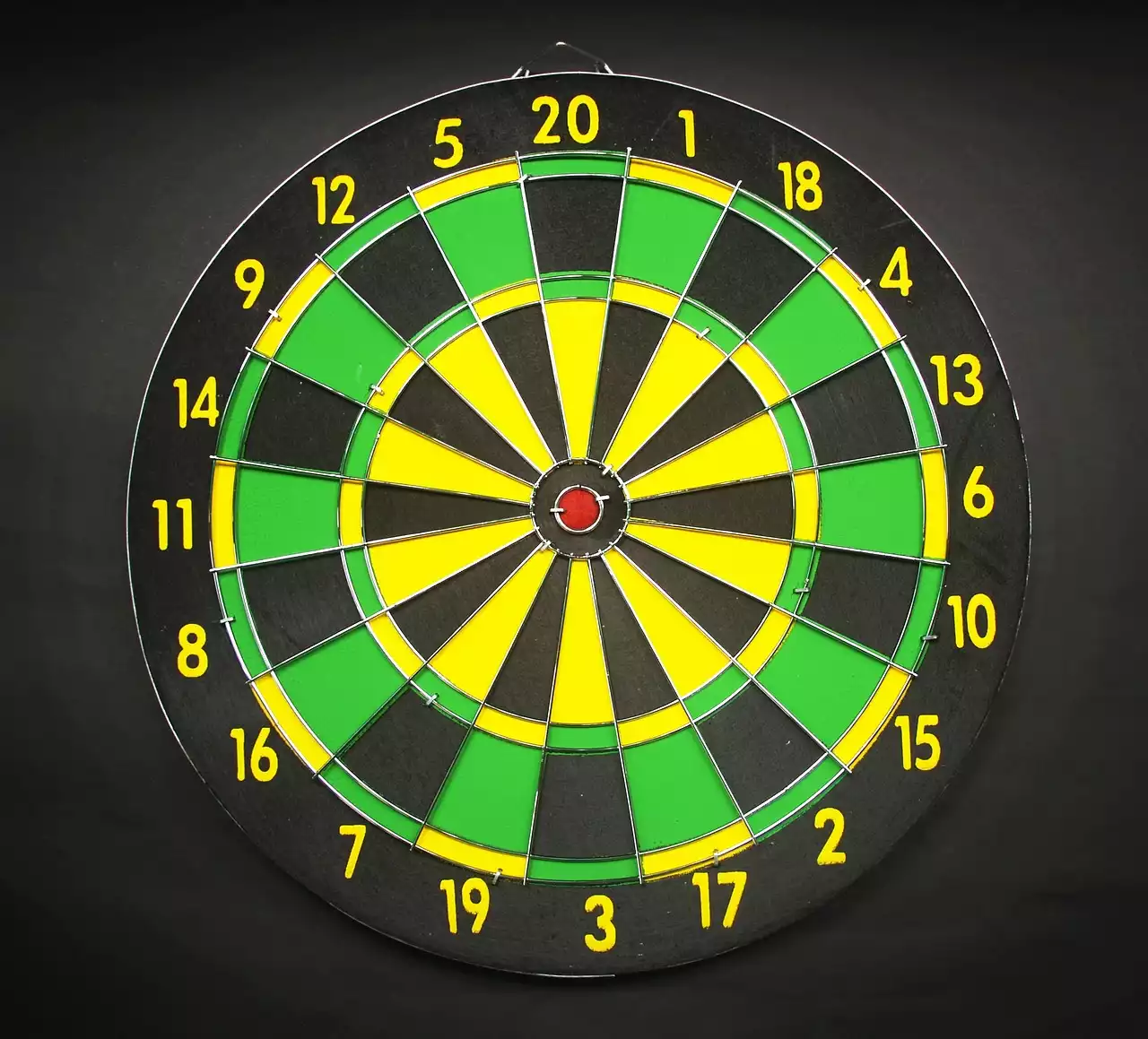Introduction
Looking to up your game on the dartboard? Whether you're a beginner looking to improve your accuracy or a seasoned player aiming to become a professional, this article will guide you through the strategies and techniques that can take your darts skills to the next level. From understanding the basic rules of the game to mastering the art of aiming and throwing, we've got you covered. We'll delve into the different types of throws, such as the power throw and the precision throw, and explore the importance of proper grip and stance. Additionally, we'll uncover the secrets behind effective mental preparation and highlight the significance of practicing consistently. So, grab your darts, take aim, and let's embark on this exciting journey to becoming a darts champion!
Basic rules and terminology of darts
Darts is a game that dates back centuries and has evolved into a popular sport played worldwide. Before diving into the strategies and techniques, it's important to understand the basic rules and terminology of the game. Darts is typically played on a board divided into numbered sections, with the objective being to score points by throwing darts at specific targets. The most common game played is 501, where each player starts with 501 points and must reach zero by subtracting their score with each throw. Other variations include 301 and Cricket. Familiarizing yourself with the rules and terminology will provide a solid foundation for your darts journey.
When playing darts, it's important to understand the different parts of the dartboard and their corresponding values. The board is divided into 20 numbered sections, with the highest value being the triple 20 and the lowest being the outer bullseye. The inner bullseye, also known as the bull or bullseye, holds the highest value. To improve your game, it's crucial to learn how to target these specific areas consistently.
Choosing the right darts and equipment
Selecting the right darts and equipment is essential for achieving success in darts. There are various factors to consider when choosing your darts, including weight, grip, and balance. The weight of the dart can greatly impact your throws, with heavier darts offering more stability and control, while lighter darts allow for faster throws. Experimenting with different weights will help you determine the best fit for your playing style.
Another crucial aspect is the grip of the dart. The grip determines how well you can hold and control the dart during your throw. There are several grip styles, including the pencil grip, the fingertip grip, and the palm grip. It's important to find a grip that feels natural and comfortable for you. Additionally, finding a dart with the right balance is key. A well-balanced dart will fly smoothly through the air, increasing your chances of hitting the desired target.
Apart from darts, other equipment such as dartboards and dart mats are equally important. Investing in a high-quality dartboard will ensure durability and accurate scoring. A dart mat not only protects your floor but also provides a consistent surface to stand on. Choosing the right equipment will enhance your overall playing experience and give you a competitive edge.
Techniques for holding and throwing darts
Mastering the art of holding and throwing darts is crucial for achieving accuracy and consistency in your throws. One of the most important aspects is finding the right grip. Experiment with different grip styles mentioned earlier to find the one that feels most comfortable and natural for you. The grip should allow you to maintain control of the dart without sacrificing accuracy.
Once you've found your grip, it's time to focus on the throwing technique. Start by positioning your feet shoulder-width apart, with your dominant foot slightly forward. This stance provides stability and balance throughout your throw. As you prepare to throw, keep your arm straight and your elbow at a 90-degree angle. Aim your dominant eye towards the target, aligning it with the desired section of the dartboard.
As you release the dart, maintain a smooth and fluid motion, avoiding any jerky movements. Follow through with your arm, extending it towards the target. The release point is crucial, so practice finding the right moment to let go of the dart. Remember, consistency is key. The more you practice, the more natural and effortless your throws will become.
Developing accuracy and consistency in your throws
Accurate and consistent throws are essential for success in darts. To develop these skills, it's important to focus on practicing specific techniques and exercises. One effective exercise is to aim for specific targets on the dartboard, such as hitting the triple 20 or the bullseye consistently. This exercise will help improve your aim and develop muscle memory.
Another technique to enhance accuracy is to focus on your breathing and mental state while throwing. Take a deep breath before each throw to calm your nerves and maintain focus. Visualize your desired target and execute your throw with confidence. Mental preparation plays a significant role in achieving consistent and accurate throws.
Consistency in darts is not just about hitting the target but also about maintaining a consistent grip, stance, and release. Establishing a routine and practicing regularly will help develop muscle memory and improve your overall consistency. Dedicate time each day to practice your throws, focusing on technique and form. The more you practice, the more consistent and accurate your throws will become.
Strategies for different dart game variations
Darts offers a wide range of game variations, each with its own set of rules and strategies. Understanding these variations will allow you to adapt your gameplay and increase your chances of winning. Some common game variations include 501, Cricket, and Around the Clock.
In 501, the objective is to reach zero from the starting score of 501. This game requires strategic thinking and efficient scoring to reach zero in the fewest number of throws. Understanding the optimal paths for scoring, such as aiming for triple 20s or hitting specific combinations, will give you an edge in 501.
Cricket is another popular dart game variation that requires a different approach. The objective is to hit specific numbers on the dartboard and close them out before your opponent. Strategic targeting and efficient scoring are key in this game. Focus on closing out numbers that your opponent has yet to hit and aim for the highest possible scores.
Around the Clock is a game variation that tests your accuracy and consistency. The objective is to hit each number on the dartboard in sequential order, starting from 1 and ending at 20. This game variation is great for improving your overall accuracy and developing consistency in hitting different sections of the dartboard.
Mental focus and concentration in darts
Darts is not just a physical game but also a mental one. Maintaining mental focus and concentration is crucial for success on the dartboard. Distractions can easily throw off your game, so it's important to develop techniques to stay focused. One effective method is to establish a pre-shot routine. This routine helps create a sense of familiarity and prepares your mind for the upcoming throw. It can include deep breaths, visualizing your throw, or even a specific physical motion before each throw.
Another important aspect is learning to let go of mistakes and stay positive. Darts can be a game of ups and downs, and dwelling on missed shots can negatively impact your performance. Instead, focus on the present moment and maintain a positive mindset. Treat each throw as a new opportunity and stay confident in your abilities.
Additionally, managing pressure and nerves is crucial in competitive darts. As the stakes get higher, it's important to stay composed and in control. Practice relaxation techniques such as deep breathing, visualization, and positive self-talk to calm your nerves and maintain focus. Mental preparation is just as important as physical practice when it comes to darts.
Practice drills and exercises to improve your game
To improve your darts game, it's essential to incorporate targeted practice drills and exercises into your routine. These drills will help you focus on specific skills and areas that need improvement. One drill is the "20 to 1" drill, where you start by aiming for the triple 20 and work your way down to the single 1. This drill helps improve accuracy and consistency by targeting different sections of the dartboard.
Another effective drill is the "Bullseye Challenge." Set a goal to hit a certain number of bullseyes within a specific number of throws. This drill not only improves your aim but also builds mental resilience and focus.
For those looking to enhance their scoring ability, the "Scoring Zone Drill" is highly beneficial. Aim for specific areas of the dartboard, such as the triple 20 or the triple 19, and record your scores. Over time, you'll notice an improvement in your overall scoring ability.
Participating in dart leagues and competitions
Once you've honed your skills, participating in dart leagues and competitions is a great way to test your abilities and further improve your game. Dart leagues provide a structured and competitive environment where you can play against players of different skill levels. This allows you to learn from others, gain experience, and identify areas for improvement.
Competitions, on the other hand, offer a higher level of challenge and the opportunity to showcase your skills on a larger stage. Participating in local, regional, or even national competitions can provide exposure and potentially open doors to professional opportunities.
Joining a dart league or participating in competitions not only helps you gauge your progress but also fosters camaraderie and a sense of community among fellow darts enthusiasts. It's a chance to connect with like-minded individuals who share your passion for the game.
Tips for becoming a professional darts player
If you aspire to become a professional darts player, there are several tips to keep in mind. First and foremost, dedication and commitment are vital. Professional darts players invest countless hours in practice, honing their skills and perfecting their technique. Consistency is key, so establish a practice routine and stick to it.
Secondly, seek opportunities to compete at higher levels. Look for regional or national tournaments where you can showcase your skills and gain exposure. Networking with other players and professionals in the industry can also open doors to professional opportunities.
Additionally, consider seeking guidance from experienced coaches or mentors who can provide valuable insights and help you refine your game. They can offer personalized advice, identify areas for improvement, and provide support on your journey to becoming a professional darts player.
Lastly, never stop learning and adapting. Stay updated with the latest trends and strategies in the darts world. Watch professional matches, study the techniques of top players, and analyze their strategies. Continuously strive to improve and evolve your game.










